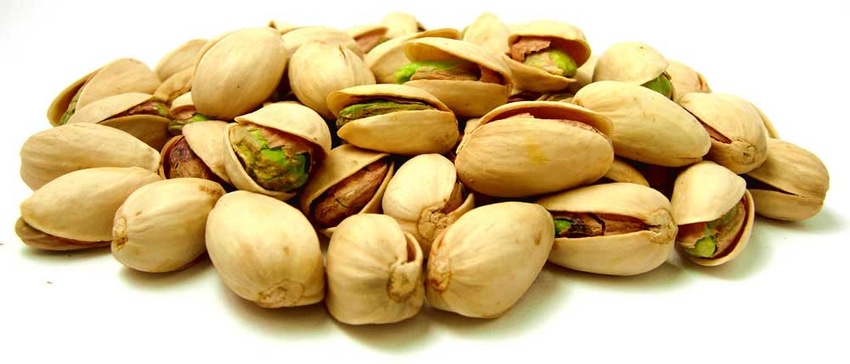New study suggests nearly all of the polyphenols in pistachios are released to the body during digestion, although dietary fat may not be completely absorbed.
May 19, 2013

A new research study, using an experimental model that mimics digestion, suggests that nearly all of the polyphenols in pistachios are released to the body during digestion. The new findings, when considered along with earlier research that suggests dietary fat may not be completely absorbed, is a win-win for those on the lookout for nutrient-rich snacks they can feel good about as part of an overall healthy diet.
The new study appears in the January issue of the Journal of Nutrition and was conducted by the Model Gut Group at the Institute of Food Research (IFR) in the United Kingdom in association with the University of Messina, Italy.
The study specifically looked at polyphenols and antioxidants, such as gamma-tocopherol (vitamin E), found in pistachios. The study found that these polyphenols and antioxidants, which are also found in fruits and vegetables, are released during digestion, making them available to the body.
This study may be interesting because it suggests that the body may be able to absorb the polyphenols and antioxidants found in pistachios, which may be significant because nutrients aren't always readily accessible by the body. As an example, iron in spinach is naturally harder for the human body to absorb. However, the iron can be made more readily absorbed by the body when combined with vitamin C.
Pistachios: antioxidants you can see
Pistachios are the colorful nut, owing their green, yellow, and purple-red colors to the antioxidants and polyphenols found in the kernels and skins. It's easy to spot the good nutrition provided by pistachios: their true colors shine through in their green and yellow kernels, and their purple and red skins.
Fat in pistachios may not be completely absorbed
A preliminary study published in the January 2012 issue of British Journal of Nutrition suggests that the fat in pistachios may not be completely absorbed by the body. The small, randomized controlled‐feeding study, which is the first‐of‐its‐kind research with nuts, suggests we may consume less calories per serving than originally thought. Conducted by the Agricultural Research Service (ARS) of the United States Department of Agriculture (USDA), the study suggests that pistachios provide 160 calories per 30 gram serving (approximately 1 ounce).
The research measured the energy value of pistachios by feeding 16 healthy adults the nuts as part of a controlled diet and calculating the energy value from differences in energy excretion during the dietary treatment timeframe. The resulting energy value of one 30‐gram serving of pistachios was 5 percent less than previous calculations.
The snacking bottom line
Pistachios are a great-tasting, fun, and healthy snack with protein, fiber, and antioxidants. A naturally cholesterol-free food, 90-percent of the fat in pistachios is the healthy unsaturated type. A one-ounce serving of pistachios equals 49 nuts, which is more nuts per serving than any other snack nut. Be sure to color your plate with pistachios.

You May Also Like


